The views expressed in our content reflect individual perspectives and do not represent the authoritative views of the Baha'i Faith.
As the Freedom Riders of 1961 would do three decades later, Louis Gregory and Willard McKay traveled together through the Jim Crow South in 1931 to demonstrate the unity of humanity.
Gregory, a black man, and McKay, a white man, expressed their point; they caused transformation; they made history. In 1913 Abdu’l-Baha, the son of Baha’u’llah, the prophet and founder of the Baha’i Faith, had asked Louis Gregory to “Work for unity and harmony between the races,” and Louis spent the rest of his life doing just that.
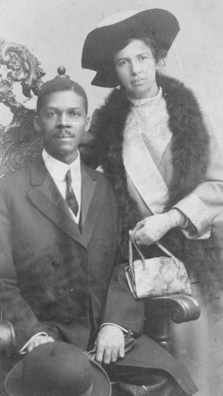
Here are some glimpses of their remarkable journey, most of them extracted from Willard’s unpublished report on their trip.
A meticulously groomed and graceful individual, Louis had to travel in the grittiest circumstances on segregated buses and trains. He’d been apprenticed to a tailor in his youth and he kept his three-piece suits perfectly trim and pressed, shined his shoes to perfection, and carried a neatly rolled umbrella just in case of stormy weather. No one would have suspected his poverty and the dusty rigor of his days and nights on the road.
Now, people who had listened to him preach brotherhood “with a grain of salt” (as Willard put it) could see brotherhood and unity in action when Louis visited them again with Willard by his side. Together, the two of them presented a striking vision of unity in diversity in the Jim Crow South, when few had ever seen or even imagined the sight of two men of different races acting as one. Louis and Willard, despite the dangers and discrimination they faced in the South at that time, had decided to do what they could to follow the powerful Baha’i admonition to:
… gather a single assemblage so imbued with the sentiments of love, affection, attraction and enkindlement as to unite the members of different races and to raise up from the heart of the world a voice that shall dispel war and strife, uproot dissension and disputation, usher in the era of universal peace and establish unity and concord amongst men.
In Atlanta, their first stop on The Trip, Louis and Willard spoke at Morris Brown College, the School of Social Work, the Spellman Preparatory High School, Morehouse University, and the Home Training School. They also met privately with individuals and groups, including the city interracial committee.
At one gathering, a Baha’i named Mae C. Hawes told them an indelible story. She’d just returned from New York City, having gotten her master’s degree in Library Science at Columbia University. She related that, toward the end of the year, in her sociology class, “the ‘Negro problem’ came up … A young man from St. Louis said, ‘In Missouri we like our Negroes black and our whites white. But the yellow Negroes . … we can’t stand …’ A girl from Ohio contributed, “We think the light-colored Negroes have it a little easier because the whites think they must be better than the dark ones because they have more white blood.”
Mae said that she, a fair-skinned blonde, listened in shock, realizing that these friends of hers thought she was white. She said, “I thought you all knew that I am a Negro.” Silence. She added, “Let’s talk this thing through …” She calmly advanced scientific evidence for the oneness of the human race. Finally the Missouri student commented that he’d been trying to understand where he’d gotten his biased point of view. “And now I know,” he said.
He remembered that as a child walking with his father he’d doffed his hat to an African-American woman. His father scolded, “Don’t ever do that again.” But a few days later he politely greeted another African American woman. His father took him home and beat him within an inch of serious injury, saying, “I’ll teach you to show respect to a nigger.”
Reporting the story, Willard capped it with Louis’ observation, “There’s great good in the theory advanced in Plato’s Republic that children should be taken from their parents before they have a chance to learn their vices.”
Onward the two rolled to Tuskegee Institute in Alabama. Seated in the back of the bus with Louis, Willard found he had more leg room, but the motion was “more perceptible.” However, when the bus began to empty the porter seated the two further toward the front. At last they passed through Tuskegee, “a small white village” and got off the bus at the Institute, “which is a separate world,” Willard noted.
“It has its own stores, post office, and even its own student bank …” At Tuskegee, they stayed in The Oaks, the old home of the school’s founder, Booker T. Washington. After a first meal in a dining hall set apart for white guests, where they were seated in a different room from “three white gentlemen from Georgia” so they wouldn’t cause offense, they took the rest of their meals with the faculty.
“Why don’t white folks like Negroes?” the students asked Willard and Louis. “What can we do to overcome the prejudice against us?” “Do you think the Amos ‘n’ Andy broadcast is harmful?” “In your personal opinion is prejudice against Negroes … due to jealousy or to the inferiority of the Negro?” “Why do white and colored children play together but tend to separate as they grow older?”
Soon warmth and spontaneity characterized the exchanges. Later, Louis and Willard addressed a Sunday evening assembly of the entire student body and faculty. A contemporary described their joint teaching method: Willard gives the basic Baha’i tenets and Louis “furnishes the rousement.”
On their last morning at Tuskegee, Willard and Louis met with George Washington Carver, the world famous agriculturalist and chemist most well-known as the inventor of peanut butter. He had his laboratory and fields at the Tuskegee Institute. Willard found the aging scientist to be “unpretentious and quite poor..” and said, “He remains at Tuskegee from choice. He’s turned down remunerative positions offered by commercial companies because he’s needed at the institute to create revenue through his agricultural researches.” When he returned home, Willard told two young friends, “Boys, you can thank Dr. Carver for the quality of your beloved peanut butter. He has experimented with over forty varieties of peanut …”
In Huntsville, Louis and Willard arrived at Alabama A&M University to be met by a student who told Willard, “President Drake says that we have no separate accommodations, but that if you will room with Mr. Gregory we shall be very glad to entertain you.” Later, in the washroom, Willard met an African American student who told him “all the boys” think “it’s wonderful that you’ll sleep in a Negro’s bed. They never heard of such a thing … my father will hardly believe it when I tell him. This will be the most interesting news I’ve ever brought home from school.”
But faculty and students at A&M were “under a cloud of sadness and discouragement.” Shortly before Louis and Willard’s arrival, their football coach had been murdered by a truckload of white men for no reason except that the men were “in a bad mood, presumably over the progress” of a trial in Binghamton. Louis and Willard gave several talks to large audiences at the university, and among the people who expressed the most appreciation was a man who tried to save the coach from his murderers and suffered a vicious beating himself.
At Fisk University in Nashville, where Louis had earned his undergraduate degree, he and Willard stayed in Dunn House with bachelor faculty members. The student body was African American, but the faculty was integrated. “Many of the Fisk students come from wealthy homes …” Willard observed, and “are sophisticated, discriminating, critical and intensely dissatisfied. The faculty likewise, but tempered by maturity and tolerance …”
Willard especially marveled at the extent of their tolerance because of another recent tragedy. Their Dean of Women had been killed in a hit and run collision, and she needn’t have died. She and the female students she was driving were all “thrown out of their car upon the State road … They lay there while traffic rolled by, and no one stopped to help them because they were colored. After a while, some colored people driving by picked them up and telephoned to a nearby hospital … This hospital refused to even administer first aid to colored people. It was necessary to drive 50 miles to a Negro hospital … As a result this able and brilliant woman (the Dean) died for lack of proper care.”
After proffering what comfort they could at Fisk and at a nearby agricultural college, Willard and Louis met with the noted archivist and researcher Arthur Schomburg in the Fiske Negro Collection. Arturo Alfonso Schomburg later became creator and curator of what is now the famed Schomburg Center for Research in Black Culture of the New York Public Library. He responded to Willard’s and Louis’ visit enthusiastically, telling them that he’d met Abdu’l-Baha in 1912.
Traveling northward, Louis and Willard made some stops in Ohio. Finally, after addressing thousands of students and scores of others, Willard headed home to Pittsburgh while Louis went on to West Virginia, following his tireless path of teaching the Baha’i principles of love and unity. When Willard spoke later of “The Trip” his eyes often filled with tears of love and hope for the poignantly promising young men and women he had met. He knew their difficulties and the wounds they carried because of American apartheid.
Louis Gregory himself felt the pain of those wounds, and Willard’s ready relinquishment of white privilege solaced his heart as much as it solaced and impressed the hearts of other people of color along their path. Louis’ travels with Willard were a crowning experience of his life.
In his Southern boyhood, along with his grandmother and mother, Louis Gregory had cherished high hopes for the process of Reconstruction – that it would grant equality of status and opportunity for everyone. Instead, Jim Crow became epidemic and segregation the law of the land. As a young man, Louis became embittered as a result, with walls of anger and anguish to surmount before he could free himself to be the saintly soul so admired by Willard.
In maturity, Louis was often a lonely sole traveler. When saddened by the tragedies he witnessed and the setbacks and humiliations he endured, he rarely revealed the extent of his pain, not because he lacked friends and correspondents, chief among them his devoted wife, but because he didn’t want to burden them. Willard’s companionable sharing of his travel conditions, and, more, his humble, open-hearted listening and learning, gave Louis encouragement he wouldn’t have asked for but sorely needed, helping him to continue on his chosen path.


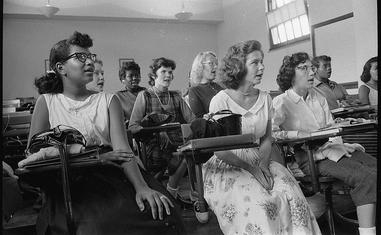


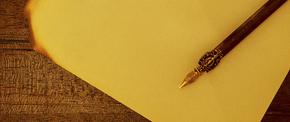
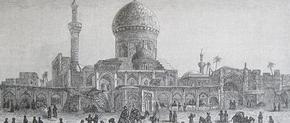
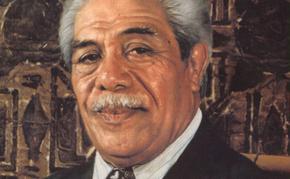









Comments
Sign in or create an account
Continue with Facebookor